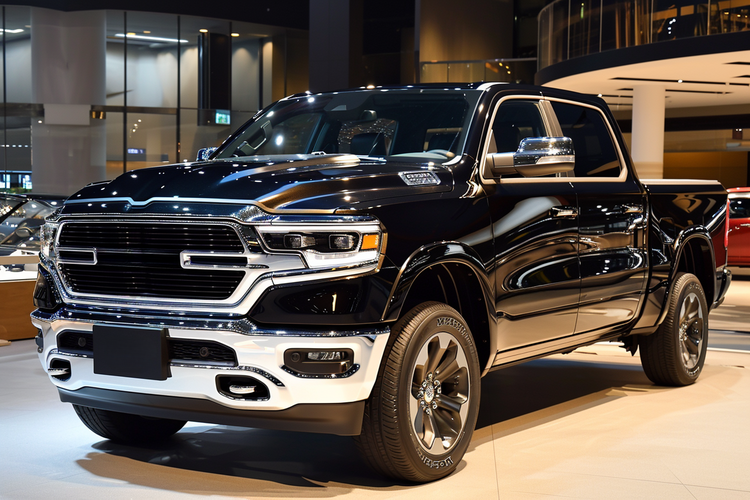2026 Isuzu D-Max — New Powertrain, Old-School Durability
The 2026 Isuzu D-Max represents a strategic evolution in the pickup truck segment, combining proven reliability with modern efficiency technologies. This updated model maintains the rugged construction that has defined the D-Max brand while introducing advanced powertrain options and enhanced interior amenities. The upcoming release promises to address contemporary demands for fuel efficiency without compromising the durability that commercial and recreational users depend on.

The automotive landscape continues to evolve as manufacturers balance traditional strengths with modern efficiency requirements. Isuzu’s approach with the 2026 D-Max demonstrates how established pickup truck platforms can adapt to changing market demands while preserving their core identity. This model represents a significant step forward in powertrain technology while maintaining the robust construction that has made the D-Max a reliable choice in demanding applications.
What Makes the Next-Gen Engine Technology Stand Out?
The 2026 D-Max introduces advanced powertrain options featuring next-gen 1.9 and 3.0 L engines paired with 48 V mild-hybrid system boost efficiency. This hybrid integration represents a meaningful advancement in diesel engine technology, allowing for improved fuel economy without sacrificing the torque characteristics essential for work applications. The mild-hybrid system provides additional power assistance during acceleration and enables engine-off coasting in appropriate conditions.
The 1.9-liter option targets users prioritizing fuel efficiency, while the 3.0-liter variant addresses higher payload and towing requirements. Both engines incorporate modern diesel technology including advanced injection systems and optimized combustion chambers. The 48-volt electrical architecture supports various efficiency features while maintaining the electrical capacity needed for modern vehicle systems.
How Does the Interior Enhancement Improve User Experience?
Interior updates focus on practical improvements that enhance daily usability. The revised interior adds soft-touch surfaces and smartphone integration, addressing common user feedback about cabin comfort and connectivity. These changes reflect recognition that modern pickup truck buyers expect passenger car levels of refinement alongside utility vehicle capability.
The soft-touch materials extend to frequently contacted surfaces including door panels, dashboard areas, and armrests. Smartphone integration encompasses both wireless and wired connectivity options, supporting various device types and operating systems. The infotainment system receives updates to accommodate these connectivity features while maintaining intuitive operation for users wearing work gloves or operating in challenging conditions.
Where Will the 2026 Model Launch First?
Market introduction plans indicate the expected launch in Asia and LatAm as a reliability benchmark for 2026. This regional focus aligns with markets where the D-Max has established strong presence and where diesel pickup trucks remain popular for both commercial and personal use. These markets also provide demanding real-world testing environments that validate durability claims.
The Asia-Pacific region includes markets with diverse operating conditions, from urban delivery applications to remote agricultural use. Latin American markets similarly demand vehicles capable of handling varied terrain and climate conditions. Success in these regions often translates to global credibility for pickup truck models, making them logical launch markets for demonstrating the enhanced D-Max capabilities.
What Pricing Expectations Should Buyers Consider?
While official pricing remains unannounced, market positioning suggests the 2026 D-Max will maintain competitive positioning within the mid-size pickup segment. Industry analysis indicates similar hybrid-equipped pickup trucks typically command premiums of 10-15% over conventional diesel variants. The D-Max pricing strategy historically emphasizes value proposition rather than premium positioning.
| Variant | Engine | Expected Price Range | Key Features |
|---|---|---|---|
| D-Max 1.9L | 1.9L Mild-Hybrid | $35,000-$40,000 | Efficiency Focus, Urban Use |
| D-Max 3.0L | 3.0L Mild-Hybrid | $42,000-$48,000 | Higher Payload, Towing Capacity |
| Comparable Model A | 2.3L Diesel | $38,000-$43,000 | Traditional Diesel |
| Comparable Model B | 3.2L Diesel | $45,000-$50,000 | Premium Features |
Prices, rates, or cost estimates mentioned in this article are based on the latest available information but may change over time. Independent research is advised before making financial decisions.
How Does This Model Address Modern Pickup Truck Requirements?
The 2026 D-Max addresses contemporary pickup truck requirements through strategic technology integration rather than complete redesign. This approach preserves proven mechanical components while adding efficiency and convenience features. The mild-hybrid system provides measurable fuel economy improvements without the complexity or cost of full hybrid systems.
Durability remains central to the D-Max value proposition, with the new powertrain designed to maintain service intervals and component longevity expectations. The interior enhancements acknowledge that pickup trucks increasingly serve dual roles as work vehicles and family transportation. This dual-purpose capability requires balancing rugged construction with comfort and convenience features.
The 2026 Isuzu D-Max represents thoughtful evolution rather than revolutionary change. By maintaining proven durability characteristics while incorporating efficiency improvements and interior enhancements, this model addresses contemporary market demands without abandoning the core strengths that have established the D-Max reputation. The regional launch strategy allows for real-world validation of these improvements in demanding markets before broader global introduction.




